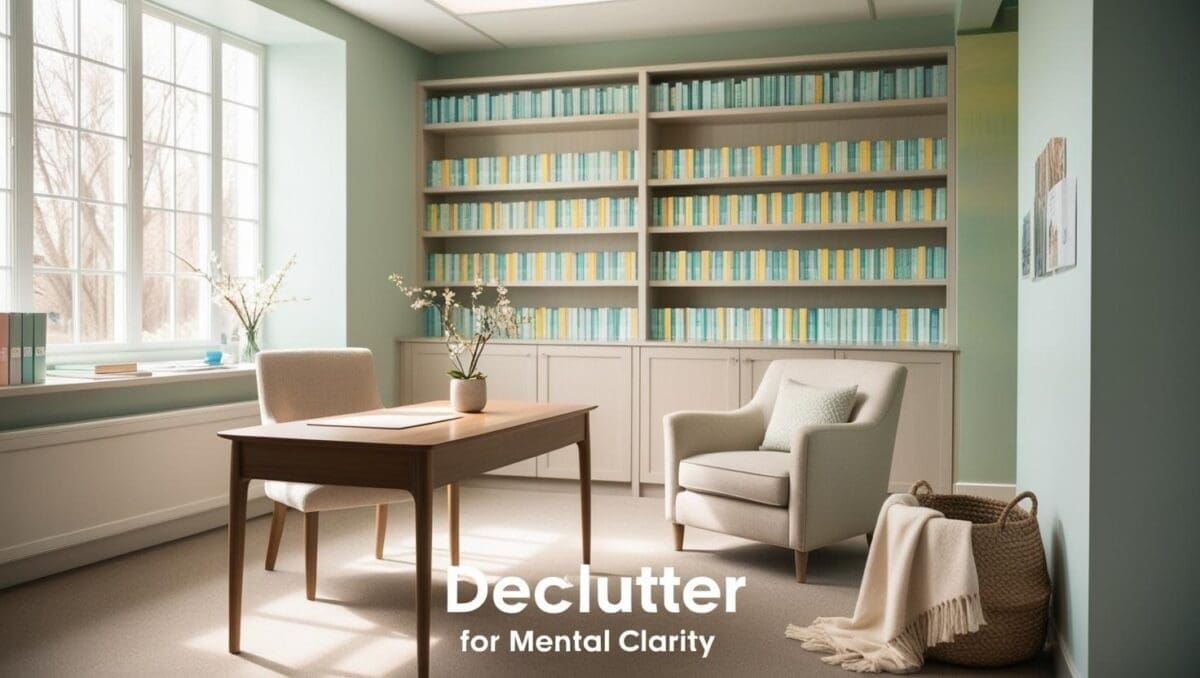Walk into a cozy therapy office and you’ll feel the shift instantly—shoulders soften, breathing slows, conversation flows. Research shows that comfort cues such as warm lighting, soft textures, and gentle background sound reduce anxiety and strengthen the therapeutic alliance. This guide walks you through proven design choices that turn any clinic room into a safe, snug retreat without sacrificing professionalism.
Why “Cozy” Works in Clinical Settings
Safety first. Clients rate comfort, privacy, and ambient warmth as top factors in choosing a therapist.
Faster rapport. Warm décor elements—wood, fabric, indirect light—create psychological safety, which speeds trust-building in early sessions.
Stress reduction. Soft furnishings and natural cues lower cortisol and heart rate, improving self-disclosure.
Layer Your Lighting
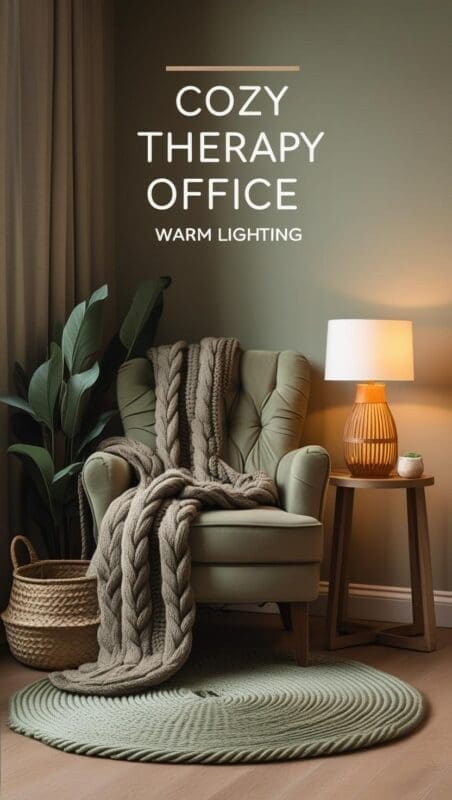
- Ambient base: Replace harsh overhead LEDs with 2700–3000 K bulbs and install dimmers to fine-tune mood.
- Task glow: Add a fabric-shade table lamp beside your chair to create a homelike reading nook.
- Accent sparkle: A string of fairy lights in a glass vase adds subtle, cozy shimmer—ideal for evening appointments.
Pro tip: Soft nature sounds (waves, rustling leaves) at or below 45 dB deepen the calming effect.
Choose Textures Clients Want to Touch
Neuroscientists link tactile richness—knits, velvets, reclaimed wood—to oxytocin release, the “bonding hormone.” Introduce textures like these:
| Texture | Cozy Effect | How to Add |
|---|---|---|
| Cable-knit throw | Visual warmth; softens seating | Drape over the client-chair arm |
| Wool rug | Acoustic buffer; barefoot comfort | Place 120 × 180 cm under the conversation zone |
| Rattan basket | Natural fibre; hidden storage | Use to hold blankets or toys |
Tune the Colour Palette
Earthy neutrals such as sand and taupe anchor the room, while muted terracotta or sage accents add life without overstimulation.
Mood-Board Snapshot
- Wall: soft mushroom grey (#D8D4CF)
- Accent pillows: sage green (#C4D4C3)
- Wood tone: mid-oak (wipe-clean varnish)
Scent & Sound: The Invisible Layers
A recent systematic review found that lavender diffusers can lower generalized-anxiety scores by 10–15 % in therapy waiting rooms. Pair the scent with low-volume nature loops for a multisensory hug.
Small-Space, Big-Cozy Tricks
- Ceiling-hung plants: Greenery softens sight-lines without stealing floor area.
- Corner lamp + mirror: Bounces light and doubles perceived width.
- Nesting tables: Pull out only what you need; slide back to declutter.
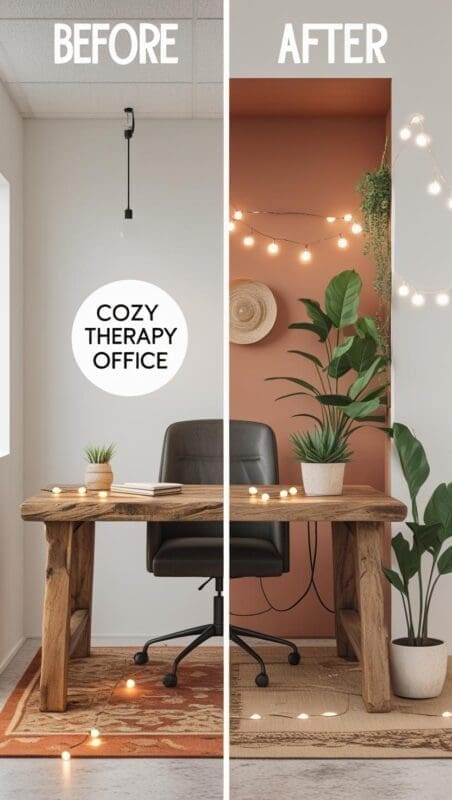
Budget Cozy Upgrades (Under €120 Total)
| Item | Price (€) | Cozy Payoff |
|---|---|---|
| Dimmer switch & warm-LED kit | 35 | Instant ambience control |
| Chunky knit throw | 25 | Tactile comfort |
| Essential-oil diffuser & oils | 20 | Calming scent layer |
| Second-hand wool rug | 30 | Acoustic & tactile warmth |
| Terracotta pot & snake plant | 10 | Biophilic touch; air purification |
Maintenance & Seasonal Refresh
- Launder throws monthly; rotate pillows each season.
- Check bulb colour temperature yearly—older LEDs drift cooler.
- Perform a “client-eye scan” quarterly: sit in their chair and note any cold corners or visual clutter.
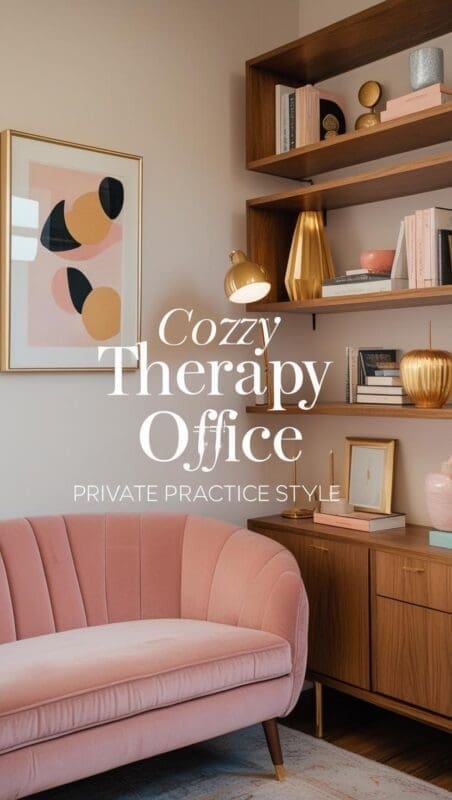
Key Takeaways
A carefully layered lighting plan, touchable textures, and soothing multisensory cues can turn any room into a cozy therapy office. Start small—swap a bulb, add a knit throw—and build warmth over time.
FAQ
What colours make a therapy office feel cozy?
Warm neutrals (sand, mushroom) with muted greens or terracotta accents invite calm without distraction.
How can I add coziness on a tight budget?
Use warm LED bulbs, thrifted wool rugs, and second-hand wood furniture—total outlay can stay under €100.
Does scent really affect client anxiety?
Yes. Lavender or cedarwood diffusers have been shown to reduce anxiety scores by up to 15 % in waiting rooms.
Can a small office still feel cozy?
Absolutely—vertical plants, mirrors, and nesting tables maximise space while adding warmth.
How often should I refresh décor elements?
Seasonal textile swaps and an annual repaint keep the room feeling fresh and cared-for.
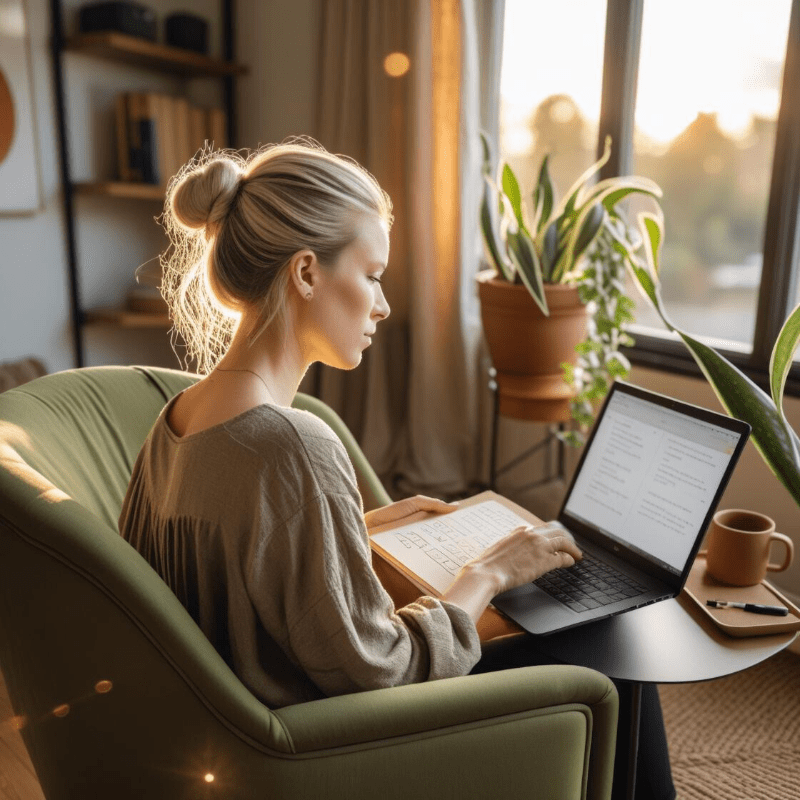
About the Author
Hi, I’m Eve, a former school counselor with a master’s degree in School Psychology and a passionate advocate for children and families navigating sensory challenges. As a mom of children with sensory sensitivities, I deeply understand the journey special-needs parents face, and I dedicate myself to researching and sharing practical solutions to help children thrive and feel comfortable in their bodies. My goal is also to empower counselors, therapists, and psychologists with creative strategies and supportive resources to enrich their everyday practice. When I’m not writing or exploring new therapeutic approaches, you’ll find me spending quality time with my family and continually seeking inspiration from everyday moments.

